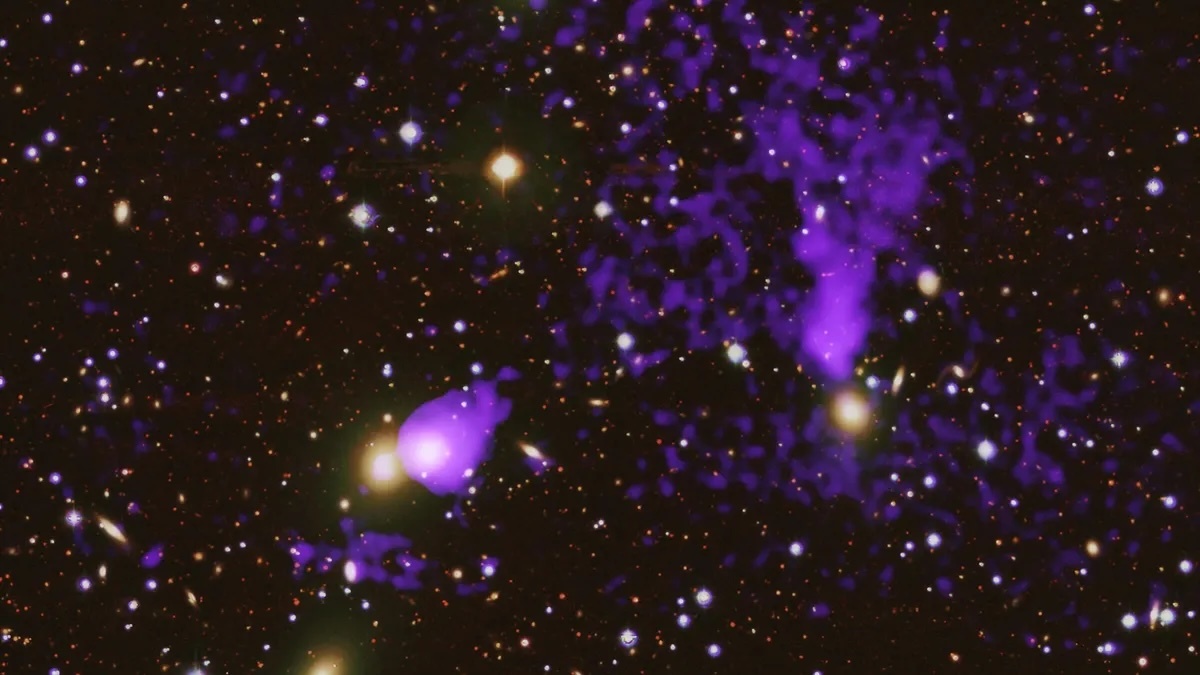2.10.2024
Criss-crossing streams of superheated gas create a "chaotic landscape" in a distant galaxy cluster.

NASA's Chandra X-ray Observatory revealed two new streams of gas trailing behind a galaxy within a cluster called Zwicky 8338. These streams appear to have crossed paths with another set of shorter gas tails trailing behind another galaxy within the cluster. (Image credit: X-ray: NASA/CXC/Xiamen Univ./C. Ge; Optical: DESI collaboration; Image Processing: NASA/CXC/SAO/N. Wolk)
Criss-crossing streams of superheated gas create a "chaotic landscape" in a distant galaxy cluster.
NASA's Chandra X-ray telescope detected two new streams of gas trailing behind a galaxy within a cluster called Zwicky 8338, or Z8338, located about 670 million light-years from Earth. Together, the two streams form an enormous, comet-like tail of hot gas that extends over 1.6 million light-years, according to a statementfrom the space agency.
The recent observations build on prior findings within the galaxy cluster, where a shorter pair of tails measuring only 800,000 light-years long had been seen trailing behind a different galaxy. The new Chandra images show that these streams trailing behind each of the galaxies have crossed one another.
"Z8338 is a chaotic landscape of galaxies, superheated gas and shock waves (akin to sonic booms created by supersonic jets) in one relatively small region of space," NASA officials said in the statement.
The criss-crossing streams of gas may help explain the evolution of the galaxy cluster. Gas that is stripped away from a galaxy as it travels through the cluster creates a tail of superheated gas. This tail can then split into two parts when it crosses paths with another stream of gas. Gas within the detached tail can then fuel the formation of new stars and planets. Therefore, it is believed that this interaction — the crossing of the streams — may lead to the creation of new structures within a cluster, according to the statement.
"This new composite image shows this spectacle," NASA officials said.
The X-ray data captured by Chandra (represented in purple) highlights the pockets of superheated gas within the cluster and its position behind the moving galaxies. The image also includes optical data of the individual galaxies from the Dark Energy Survey, conducted using the Cerro Tololo Inter-American Observatory in Chile.
The shorter pair of tails are outlined vertically in the new image, whereas the longer tails have a more horizontal orientation. Chadra's advanced capabilities allowed for deeper observations that revealed the fainter X-rays from the newer and longer set of tails.
Quelle: SC
